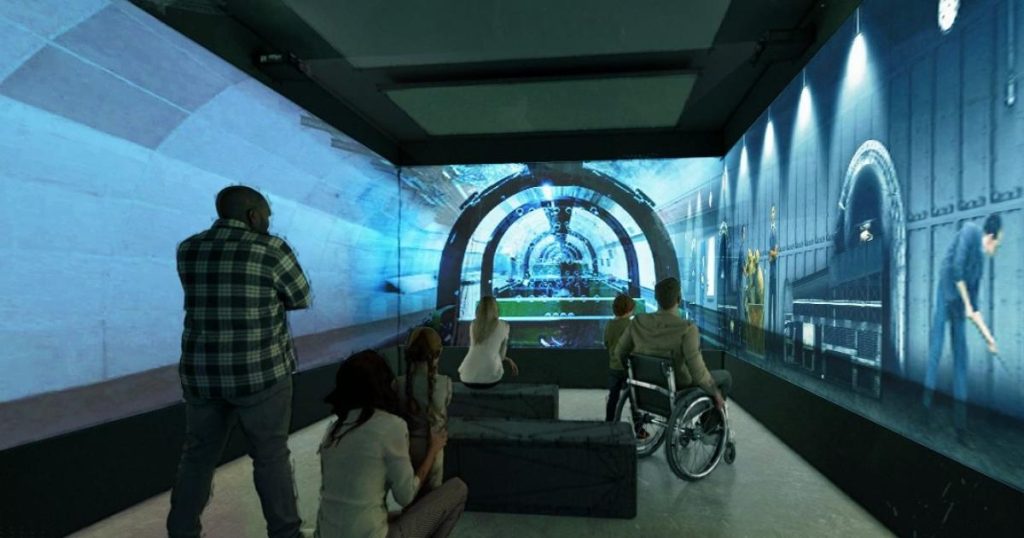The Postal Museum has announced plans to revamp its Mail Rail exhibition and ride, making it more accessible and adding new content.
The £1 million project is set to be completed by 2027, in time for the 100th anniversary of Mail Rail and the tenth anniversary of the museum.
A key feature of the project is the creation of an immersive projection space in the original train depot, set to be installed in late 2025.
This will offer an audiovisual experience for those who cannot or do not want to ride the Mail Rail trains – an underground railway that once linked major London post and sorting offices and some stations.
The trains, which travel through underground tunnels originally designed for mail transport, present significant accessibility challenges for disabled people and are unpleasant for anyone who has claustrophobia.
The museum will also introduce an accessible multimedia guide with British Sign Language (BSL) videos to interpret the ride’s audio for d/Deaf visitors.
A new on-board audio narrative will include audio description segments for blind and partially sighted visitors.
The ride’s visuals will be enhanced with new projection technology, improving the quality of the two immersive shows at the platform stops.
A new show for Platform 1 will feature recollections from staff who worked on Mail Rail and insights into the railway’s role in the global communication network.
The project is primarily funded by the Post Office Remembrance Fellowship.
Alan Bealby, chair of the fellowship, said: “We’re delighted to support The Postal Museum to improve access to their Mail Rail ride and to share the stories of the GPO workers that kept the mail moving through its 100-year operation.”
The project is also supported by Arts Council England, through its Government-funded Capital Investment Programme.
Laura Wright, CEO of The Postal Museum, said: “We’ve long wanted to improve the accessibility of Mail Rail for a much wider audience, particularly for those who are unable to ride our unique underground experience.
“Crucially, this generous support enables us to develop and deliver these upgrades in close partnership with the audiences they will serve.”
The works will be carried out in 2025 with minimal impact on the museum’s operation.



